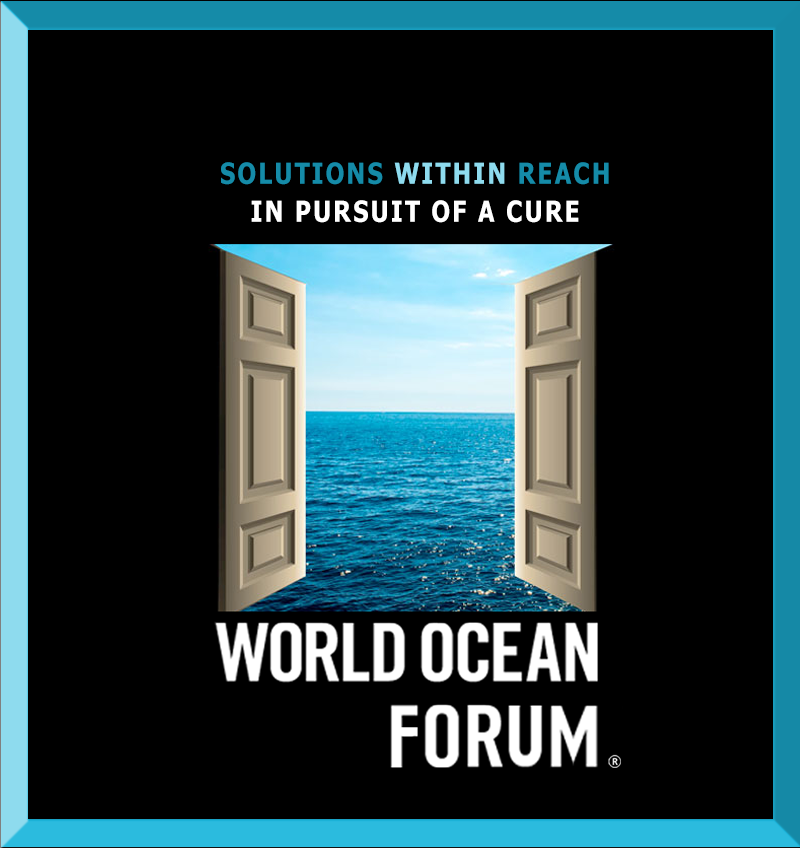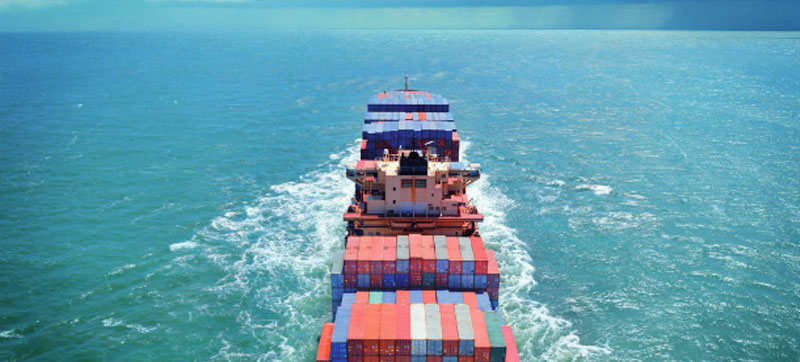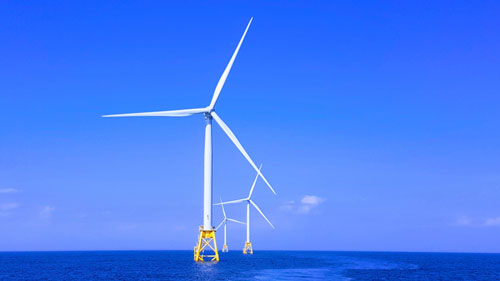A Blue Renaissance
The Value of Ecosystem Analysis in a post-Covid World

A contribution to the
Solutions Within Reach
In Pursuit of a Cure
Blog Series on
worldoceanforum.org
In April, Friends of Ocean Action, a coalition of committed and influential ocean activists, convened by the World Economic Forum and the World Resources Institute, published a most welcome report—The Ocean Finance Handbook—with the intent to provide a current overview of the investment landscape in the blue economy, by providing a common baseline of understanding of sustainable finance for all stakeholders. The Handbook aims "to serve as a reference for decision makers within governments, NGOs, the private sector, and ocean-based communities who want to understand where and how blue finance can be raised, how it can best be managed, and the types of activities that it can enable.”
The Introduction continues, “The Report will also seek to serve a similar purpose for financial professionals, offering insight into opportunities and considerations for sustainable investment in the ocean,” to include an overview of the current landscape of ocean finance, available financing options, investable opportunities, and case studies.
The Table of Contents represents an architecture of essential elements to include:
- Capital types (Impact-only money, Public financing, Official development assistance, Philanthropic grants)
- Opportunities in the sustainable blue economy (Debt, Loans, Bonds)
- Capital sources (Government, Development Assistance agencies, Domestic government, Sovereign wealth funds, Philanthropy and non-governmental organizations, Foundations, NGOs, International financial institutions, Other multilateral agencies, Private finance, Equity investors, Impact investors, Venture capitalists, Commercial banks, Pension funds, Crowd funding)
- Marine and coastal development (Nature-based infrastructure, Coastal and marine ecotourism, Maritime transportation, Ocean-based renewable energy, Offshore wind, Tidal and Wave energy, Floating solar, Waste management)
- Debt models (Policy frameworks and planning, Political willingness, Monitoring and standards, Public incentives and disincentives, Microfinance loans, Revolving loan funds, Bank loans, Conservation Impact Bonds, Project bonds, Sovereign bonds)
- Equity models (Impact investing, Seed financing, Crowd investment)
- Additional Capital types (Private equity, Public equity, Equity investment)
- Impact-only models (Corporate Social Responsibility investment)
- Hybrid models (Conservation Trust Funds, Carbon credit schemes, Debt swaps)
- Ecosystem services (Carbon Sequestration, Natural Infrastructure)
- Commodities (Wild-caught marine fisheries, Sustainable aquaculture, Marine bio-prospecting)
There is more. I include this list only to indicate the many possibilities and existing tools that are available and have been used successfully for some projects in some places by some investors with a willingness to explore new avenues for finance, new value propositions, and new calculations of return.
Download the complete report here.

But what is missing? I urge that we expand the notion of ecosystem service to include the active application of analysis, an idea sometimes mentioned in the international meeting hallways and policy web-posts, but which never seems to get traction beyond concept and a few disparate exceptional examples. The subject is included in the Report as a discussion of carbon sequestration and natural infrastructure, specifically mangrove restoration.
But as I understand it, ecosystem service analysis is a much more specific application of the value of Nature as researched, calculated, and entered into financial estimates and projections, as part of the accounting and planning for any transaction or endeavor from carbon offsets to species protection. It is a numerical tool, a measure of what Nature provides as an asset or as part of a system that produces a monetized return. The problem is that historically that value has been ignored, certainly not included in budgets and estimates of profit and loss prospectively or retrospectively. It is a value that lies at the core of exchange, financial and social, but it is never entered into the actuality of transaction.
This omission represents a substantial gap in what passes as comprehensive accounting posted to the balance sheet and cited by executives in management objectives and reports to shareholders and the investment community. To take an obvious example, the asset value of oil is typically calculated as a function of the cost of its discovery, research and development, extraction, distribution, and sale. If one accepts the idea that oil underground is the property of the citizens of the place where it is found, then its transferred value to an energy company is purely the expense of its production against its revenue stream. This is, of course, further complicated by incentives, subsidies, and grants to those companies, additional revenues if you will, that further skew the calculation and constitute an extraordinary transfer of wealth from public to private benefit. Further still, as the oil is a non-renewable resource, the value of its depletion as loss and the cost-benefit of alternative renewable energy technologies are also subverted or ignored. Further still, if there is an accident along the way, such as Deep-Water Horizon, with massive environmental and social damage, the financial consequence is off-set by insurance and costs born again by the tax-payer in the form of the fines to be written off, government bail-out to be sought, and a glib rationalization for any dip in the share price to be promoted the public relations department. It is, by intent, an incomplete presentation of the financial reality into which markets have invested for decades without question.
Why? Primarily, in my view, because it undermines that balance sheet by introducing not only new financial value calculations, but also by upending a conventional practice that leaves out the deficit side of the consequences. We just don’t put any real value on Nature and natural services beyond commodity value for consumption. It is a false accounting. And until that changes, the old ways, however gussied up, will endure as normal. We don’t appropriately value original value; we don’t give full measure to what is gained/lost in production; we don’t include the depletion value, irreplaceable, when the original value is exhausted. And, finally, we don't calculate the profits of alternative utility in our measures of choice.
Why not? The two most obvious explanations relate to vested interest and fear of change. If the system has proven enormously profitable, it is assumed not to be broken and not in need of fixing. A new system is an unknown, one best left unexplored, or discussed but never implemented. Until now, when a pandemic event brings economic destruction to an interconnected global financial system.

I suggest that this tragic situation seek redress—a courageous, opportunistic, transformational switch to alternative energy sources; to recovery through the implementation of new technologies; the reconstruction of infrastructure; to any and all other activities designed to mitigate the impacts of climate change and pandemics; and to the application and invention of what, how, and who we want to be on the other side of today.
The risk in doing nothing is astronomical—for the present, the near future, and for future generations. The risk in embracing such change is negligible, as we have all the tools required today if only we transform our pessimism into positive political will.
Ecosystems service analysis applied in the consideration of all this change would assure the additional proactive protection that such actions would contribute to a new paradigm of controlled growth based on principles of conservation, sustainability, and protection of natural resources as the essential foundation for a viable future. As the sea connects all things, from food to cultural traditions, the ocean will contribute its part. To fail in this endeavor is an act of self-destruction in the face of a blue renaissance to come.
- - -

Peter Neill's "Blue Renaissance" is a response in the Solutions Within Reach series, a new focus for the World Ocean Forum to engage with our network of thinkers, scientists, decision-makers, activists and global citizens to enable a conversation about new ideas to those that are proving ineffectual and unsustainable in the face of the Covid19 pandemic. If you have a contribution answering the question, "Who, what and how do we want to be on the other side of this crisis?" please contact us.
- Login to post comments
-


